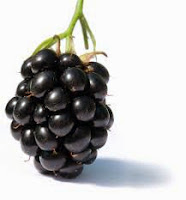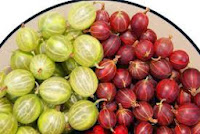Image: health.com
 |
| Image: en.wikipedia.org |
Boysenberry - slightly sweeter than blackberries
Raspberry - claim to fame - 8 grams of fiber per cup!
 |
| Image: www.muffintinmania.com |
Strawberry - peak of season is in May! These are technically not in the berry family but the Rosaceae family (I'm going to take a guess that this is where the medical term for the skin disease rosacea comes from)
 |
| Image: beenutfree.com |
Blueberry - contain anthocyanins, resveratrol, and alpha-tocopherol
Lingonberry - (my first thought of was IKEA food items, turns out...) this is a Scandinavian berry that can be eaten fresh or used in jams, juice and more. Visit your local IKEA dreamland for more food items
 |
| Image: savingdinner.com |
Cranberry - a true friend in times of wanting to prevent UTIs (cranberries can play a role in preventing bacteria from adhering to the bladder wall)! Granted, the best is fresh, unsweetened (no Ocean Spray!) but I've found a number of good juices. Cooked cranberries have a nice, full flavor when cooked and are great for autumnal dishes.
What to look for in the store: Plump, firm berries without bruises or wrinkles (except for dried goji berries, of course). Because berries mold oh-so-easily, make sure you choose a carton that has dry, unbroken ones. To help preserve shelf-life, wash them just before eating and freeze any you don't plan to use within 3-6 days.
Why berries Rock my Socks (and should yours too!) They are generally lower on the glycemic index, making it easier for those with blood sugar handling issues, i.e. diabetes, to enjoy. They have high water and antioxidant content, vitamins and minerals.
We can put berries in desserts, breakfast dishes, smoothies, yogurt, salads, and eat as snacks.
For portion-control, remember 1/2 cup of dried fruit & 1 cup of fresh fruit = 1 serving
